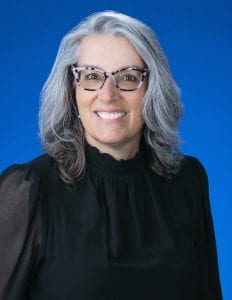Papers and Presentation Coincided with World Sight Day
Two papers published today in The Lancet Global Health mark an important milestone in the World Health Organization and partners’ efforts to propose inclusion of two indicators of eye care coverage into those of Universal Health Coverage and ultimately the global indicator framework for the United Nations Sustainable Development Goals.
Nova Southeastern University (NSU) professor of optometry Janet L. Leasher, OD, MPH, FAAO, FNAP, was part of the research group that generated the data that lead to this research.
“The study on the effective coverage rates of spectacles (refractive error correction) in those persons over age 50 around the world demonstrates the need for more eye care professionals and better eye health policies, especially for the most vulnerable aging populations,” she said. “The main results of the study show that across the entire world, less than 43% of those over age 50 got the glasses they needed for distance, and only 20% got glasses they needed for near in 2021.”
Using data from population-based eye health surveys around the World, investigators have published baseline estimates for effective Cataract Surgical Coverage (eCSC) and effective Refractive Error Coverage (eREC). The two papers can be found online:
- Effective refractive error coverage in adults aged 50 years and older: estimates from population-based surveys in 61 countries.
- Effective cataract surgical coverage in adults aged 50 years and older: estimates from population-based surveys in 55 countries.
Cataract surgery and correction of refractive error remain two of the most cost-effective healthcare interventions ever. These two indicators serve as ideal proxy indicators not only to track changes in the uptake and quality of eye care services at the global level, but also contribute to monitoring progress towards UHC in general. In 2021, the World Health Assembly set ambitious global eyecare targets for 2030 of a 30% increase in eCSC and a 40% increase in eREC.
“This study basically measured whether or not people over age 50 can access eyeglasses, for distance seeing, and especially for seeing near and for reading, in all regions of the world.” Leasher said. “Even in the most developed countries, such as the U.S., not all people have the opportunity to get the eyeglasses they need. In such high-income countries, the good news is that roughly 80% are getting spectacles for distance; the bad news is that means two in every 10 older persons are not getting the glasses they need to see far away. As people age, it is more difficult to afford to get glasses or to seek eye care to prevent vision loss. Here in the U.S., last year, Congress attempted to pass a bill to include vision care and glasses into Medicare but was unsuccessful. Our seniors deserve better.”
Leasher currently serves the National Eye Institute as a planning group member for the National Eye Health Education Program and the strategic planning task force for public health research priorities. Her service to the Association of Schools and Colleges of Optometry includes the Public Health Educators SIG, Diversity, Equity and Inclusion SIG, International Optometric Educator SIG, the Ethics SIG, the Cultural Competency Curriculum Workshop Task Force and as a cultural competency trainer. She is a member of the American Optometric Association, the Vision Care Section of the American Public Health Association, the American Academy of Optometry, the Association of Research in Vision and Ophthalmology, and the World Council of Optometry. She previously served on the International Agency to Prevent Blindness Council of Members and as the North American Coordinator of the UNESCO Chair in Visual Health and Development. She previously served NSU as the Director of Community Outreach.
Speaking on behalf of the WHO at the launch of the “Report of the 2030 targets on effective coverage of eye care”, at the United Nations New York building on 12th October, on the eve of World Sight Day, Dr Stuart Keel said: “These two papers set the baseline for what we want to achieve by 2030 and the international collaborative effort demonstrates how well-positioned the eye care sector is to contribute to the advancement of Universal Health Coverage within countries.”
The work for the eREC study was funded by the WHO, Sightsavers, The Fred Hollows Foundation, Fondation Thea, Brien Holden Vision Institute and Lions Clubs International Foundation. The work for the eCSC study was funded by the Indigo Trust, Peek Vision, and the Wellcome Trust.

Original source can be found here.
 Alerts Sign-up
Alerts Sign-up